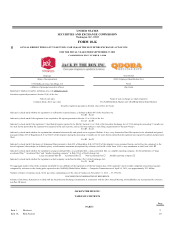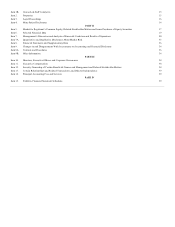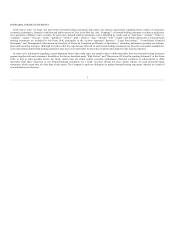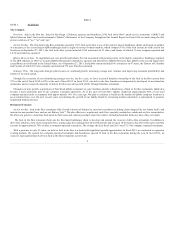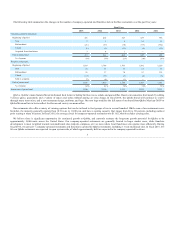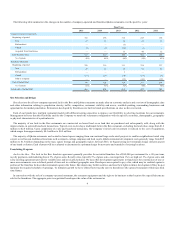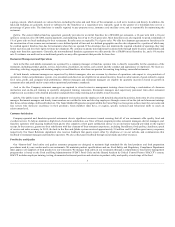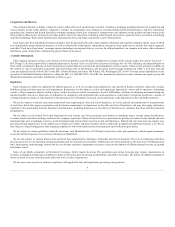Jack In The Box 2015 Annual Report Download - page 6
Download and view the complete annual report
Please find page 6 of the 2015 Jack In The Box annual report below. You can navigate through the pages in the report by either clicking on the pages listed below, or by using the keyword search tool below to find specific information within the annual report.
The following table summarizes the changes in the number of company-operated and franchise Qdoba restaurants over the past five years:
Company-operated restaurants:
Beginning of period
310
296
316
245
188
New
17
16
34
26
25
Refranchised
—
—
(3)
—
—
Closed
(5)
(2)
(64)
(1)
—
Acquired from franchisees
—
—
13
46
32
End of period total
322
310
296
316
245
% of system
49%
49%
48%
50%
42%
Franchise restaurants:
Beginning of period
328
319
311
338
337
New
22
22
34
32
42
Refranchised
—
—
3
—
—
Closed
(11)
(13)
(16)
(13)
(9)
Sold to company
—
—
(13)
(46)
(32)
End of period total
339
328
319
311
338
% of system
51%
51%
52%
50%
58%
System end of period total
661
638
615
627
583
Site selections for all new company-operated Jack in the Box and Qdoba restaurants are made after an economic analysis and a review of demographic data
and other information relating to population density, traffic, competition, restaurant visibility and access, available parking, surrounding businesses and
opportunities for market penetration. Restaurants developed by franchisees are built to brand specifications on sites we have reviewed.
Each of our brands have multiple restaurant models with different seating capacities to improve our flexibility in selecting locations for our restaurants.
Management believes that this flexibility enables the Company to match the restaurant configuration with the specific economic, demographic, geographic
or physical characteristics of a particular site.
The majority of our Jack in the Box restaurants are constructed on leased land or on land that we purchased and subsequently sold, along with the
improvements, in sale and leaseback transactions. Typical costs to develop a traditional Jack in the Box restaurant, excluding the land value, range from $1.2
million to $2.0 million. Upon completion of a sale and leaseback transaction, the Company’s initial cash investment is reduced to the cost of equipment,
which ranges from approximately $0.3 million to $0.5 million.
The majority of Qdoba restaurants are located in leased spaces ranging from conventional large-scale retail projects to smaller neighborhood retail strip
centers as well as non-traditional locations such as airports, college campuses and food courts. Qdoba restaurant development costs generally range from $0.5
million to $1.5 million depending on the type, square footage and geographic region. In fiscal 2015, we began testing new restaurant design elements as part
of our brand evolution. Each element will be evaluated to determine the optimum design for new units and remodels of existing locations.
Jack in the Box. The Jack in the Box franchise agreement generally provides for an initial franchise fee of $50,000 per restaurant for a 20-year term,
royalty payments, and marketing fees at 5% of gross sales. Royalty rates, typically 5% of gross sales, can range from 1% to as high as 15% of gross sales, and
some existing agreements provide for variable rates and/or royalty holidays. We may offer development agreements to franchisees for construction of one or
more new restaurants over a defined period of time and in a defined geographic area. Developers are required to pay a fee, which may be credited against a
portion of the franchise fee due when restaurants open in the future. Developers may forfeit such fees and lose their rights to future development if they do not
maintain the required schedule of openings. To stimulate growth we have offered lower royalty rates to franchisees who opened restaurants within specified
time frames.
In connection with the sale of a company-operated restaurant, the restaurant equipment and the right to do business at that location for a specified term are
sold to the franchisee. The aggregate price is negotiated based upon the value of the restaurant as
4

